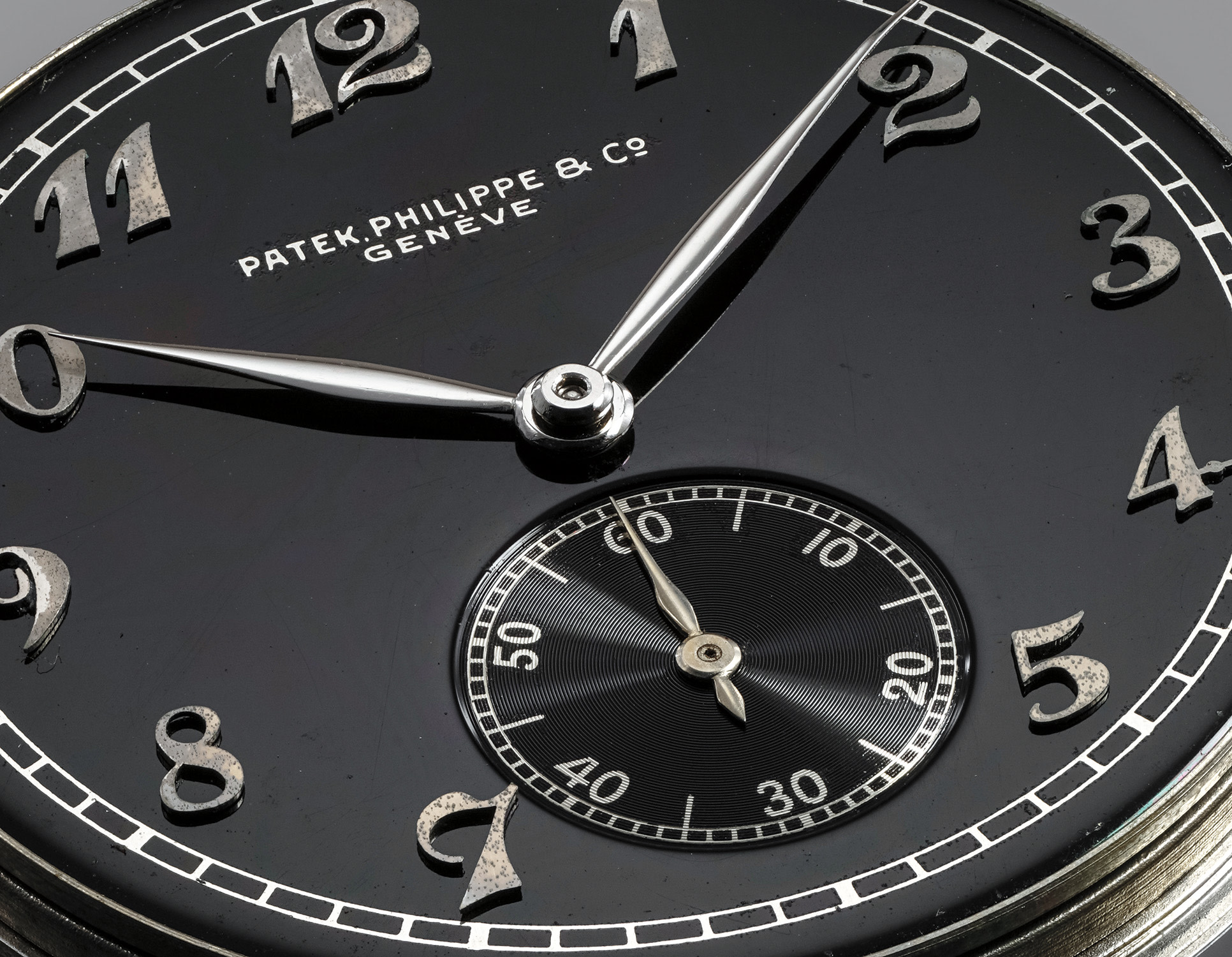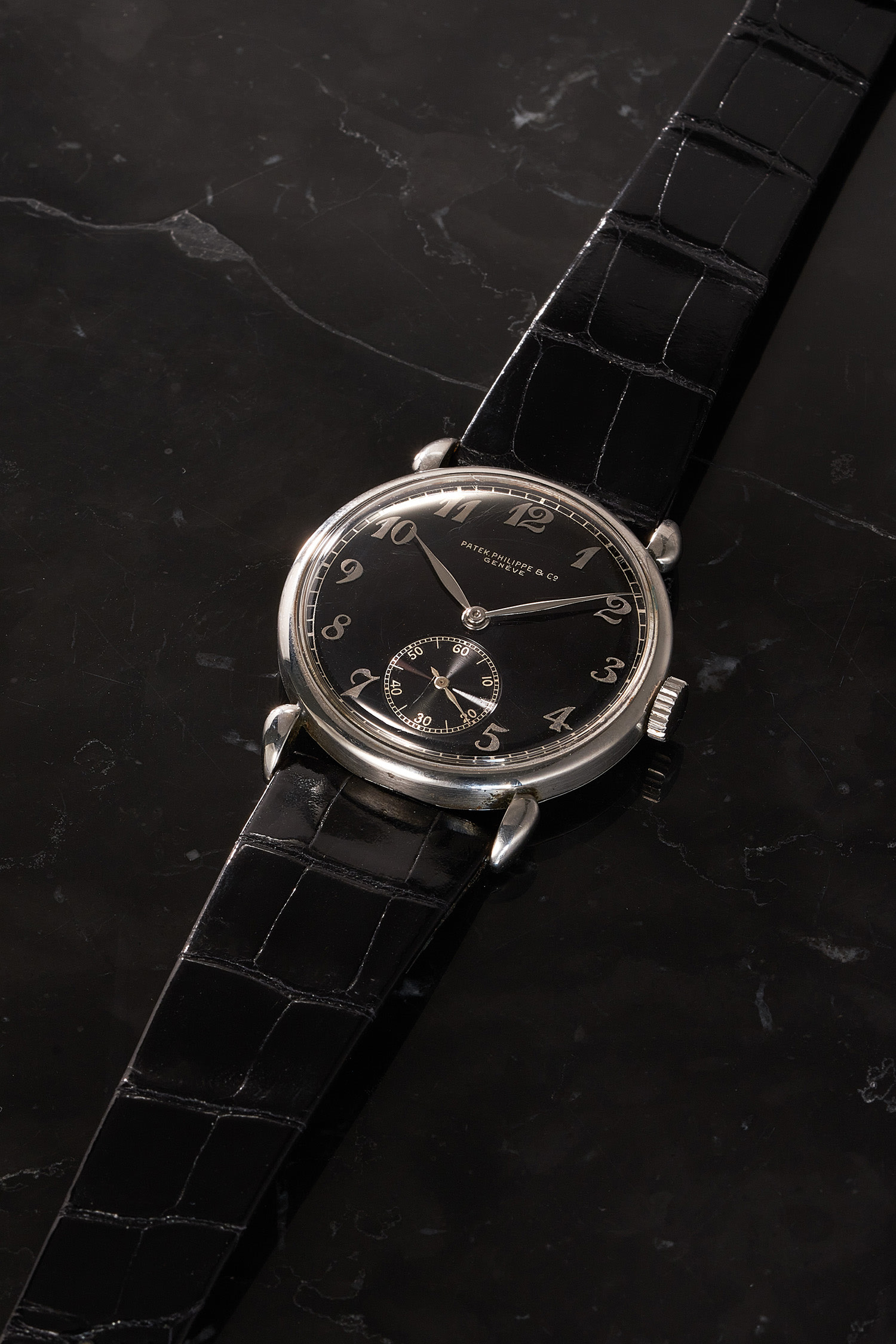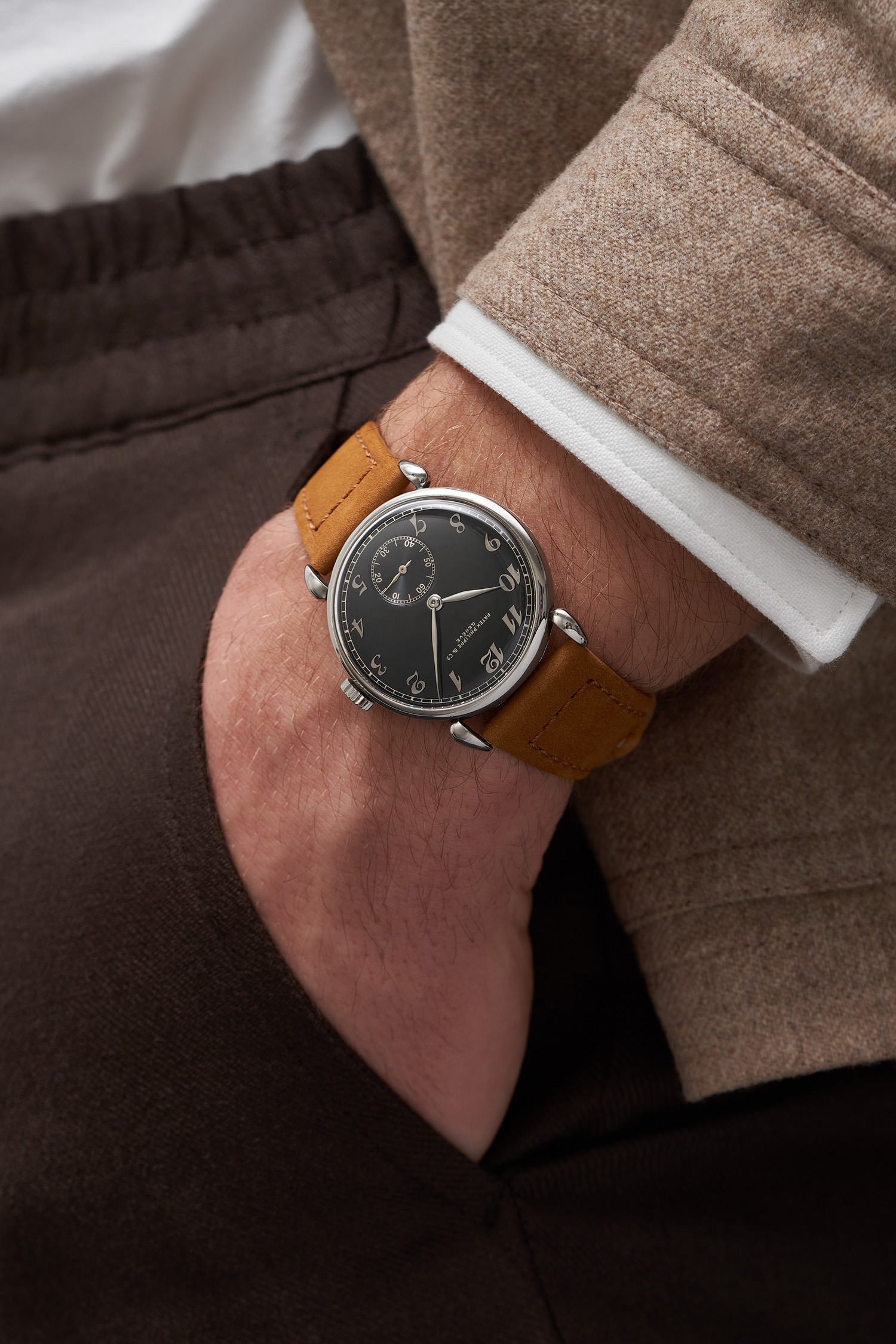















完整圖錄內容
The present wristwatch might be considered one of the most extreme examples of this philosophy. While it obviously is a simple time-only wristwatch, even those most unaware in the “ways” of watch collecting cannot deny its incredible attractiveness, and true watch enthusiast will realise they are in front of a treasure trove of history, rarity and condition.
“The Wiesenthal”, as it is known since its first appearance on the market in 2007, represents the most elusive - and arguably the most attractive - iteration of reference 1503: only one other example (no. 925’057) is known with black lacquered dial and Breguet numerals, making this one a two-pieces (known) version. This compounds to the already remarkable rarity of the reference in itself - which was made for only 4 years from 1941 to 1944.
Aesthetically, it is one of the very few Patek Philippe designs to incorporate the flamboyant teardrop lugs, possibly a touch of flair intended to impart more character to the otherwise very utilitarian, nearly militaristic case body design (and one has to say: mission undoubtedly accomplished!).
From a technical standpoint, adding to the unusual traits of the reference the dial lacks the usual anchoring “feet”, thus the case features a 2-piece construction with an inner 2mm metal ring intended to keep the dial and movement in place. The consequence is that this is one of the very few Patek Philippe models where removing the case back does not immediately expose the movement as the entire movement/dial block is attached to the back, rather than to the case body as is usually seen in Patek Philippe pieces.
So far, it has been pointed out how this watch - due to its incredible looks, astounding rarity and unusual technical solutions - can be classified as an absolute champion of vintage Patek Philippe production. When one looks at its history and provenance, however, it becomes apparent that we are in the presence of a timepiece of outstanding historical importance.
The watch first appeared on the market in 2007, and it was consigned at public auction by the family of the original owner: already a remarkable occurrence. Since then, it was never again seen on the public market. When one looks at the family name of the 2007 consignor, however, the timepiece stops being a mere watch and morphs into a symbol of justice, perseverance and resistance to oppression, as its original owner was none else than Simon Wiesenthal - a relentless force who helped to consign to justice more than a thousand Nazi war criminals.
Given its historical importance, stellar rarity and absolute good looks, it is no surprise that the present timepiece is included in the Patek Philippe "bible" "Patek Philippe Steel Watches" by John Goldberger. Intriguingly, in the book there is a picture of Mr. Wiesenthal at his desk, wearing a teardrop-lug timepiece which is most likely the present watch. Another image of him wearing the present timepiece is published in Getty Images under "Portrait Of Simon Wiesenthal".
SIMON WIESENTHAL
Born on December 31st, 1908, Simon Wiesenthal is today known as a champion of justice and a human rights hero, having dedicated his life to the public awareness of the Holocaust and its victims.
Having studied architecture in Prague from 1928 to 1932, Wiesenthal’s life in 1939 was turned upside down by the Nazi regime. Following the invasion of Poland, Wiesenthal had spent time under encampment, finally ending at the infamous Mathausen Camp, from which he was liberated in 1945. After the war, he dedicated his life to tracking down Nazi criminals, also founding in 1947 the Jewish Historical Documentation Centre in Linz, Austria, with the goal of gathering information and documents which could be later used in the trials against Nazi criminals.
The first few decades after the war saw Wiesenthal actively participating in efforts to locate escaped Nazis. Most notably, he opened a second Centre (Documentation Centre of the Association of Jewish Victims of the Nazi Regime) in Vienna in 1961 with similar scope to the Linz one, and was famously involved with the capture of Adolf Eichmann, one of the masterminds behind the Holocaust, and that of Karl Silberbauer, the man who arrested Anne Frank. His later years were instead dedicated to the preservation of the memory of what had happened so that it could never occur again: he gave speeches and lectures, wrote books and articles in a continued effort to make sure that antisemitism in any form remained in the past. The Simon Wiesenthal Center was inaugurated in his honor in LA in 1977. He also received, amongst others, the US Presidential Medal of Freedom and Congressional Gold Medal, France's Légion d'honneur, decorations from the Austrian and French resistance movements, the Dutch and Luxembourg Freedom Medals and an Honorary Knighthood of the British Empire for a "lifetime of service to humanity", which also recognized the work of the Simon Wiesenthal Center.
Patek Philippe
Swiss | 1839Since its founding in 1839, this famous Geneva-based firm has been surprising its clientele with superbly crafted timepieces fitted with watchmaking's most prestigious complications. Traditional and conservative designs are found across Patek Philippe's watches made throughout their history — the utmost in understated elegance.
Well-known for the Graves Supercomplication — a highly complicated pocket watch that was the world’s most complicated watch for 50 years — this family-owned brand has earned a reputation of excellence around the world. Patek's complicated vintage watches hold the highest number of world records for results achieved at auction compared with any other brand. For collectors, key models include the reference 1518, the world's first serially produced perpetual calendar chronograph, and its successor, the reference 2499. Other famous models include perpetual calendars such as the ref. 1526, ref. 3448 and 3450, chronographs such as the reference 130, 530 and 1463, as well as reference 1436 and 1563 split seconds chronographs. Patek is also well-known for their classically styled, time-only "Calatrava" dress watches, and the "Nautilus," an iconic luxury sports watch first introduced in 1976 as the reference 3700 that is still in production today.